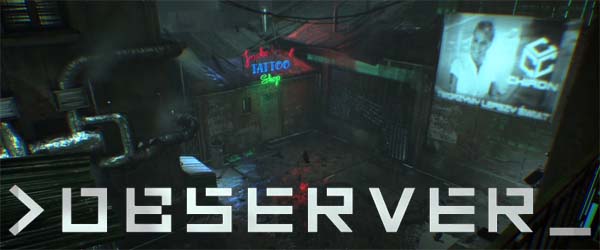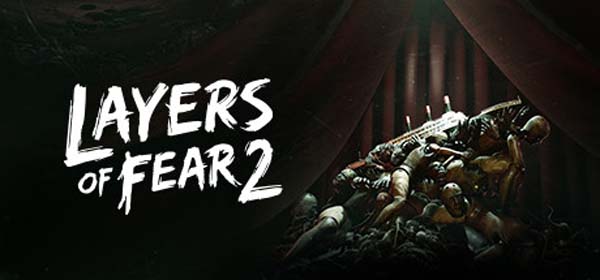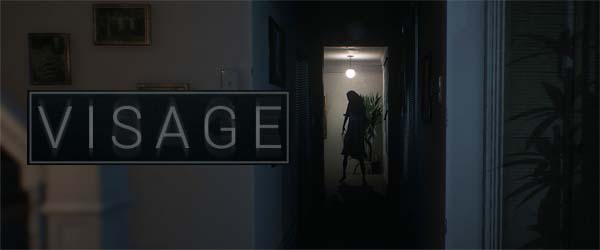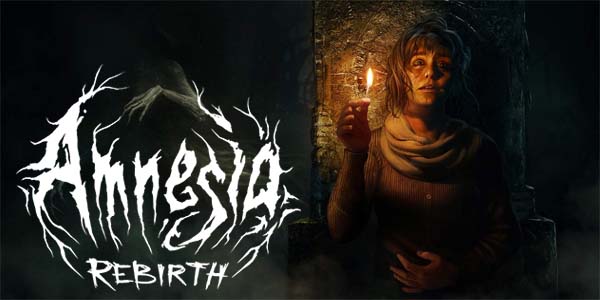I do not have particularly strong opinions one way or the other about the video game sub-genre known as "walking simulators" in general. I have strong opinions about some of the games that I've played within this genre, but I would not say that I either like or that I dislike "walking simulators" as a whole genre. Some work well and are good games. Others are un-engaging or lazy and didn't particularly work for me.
For example, I hated Dear Esther and Ether One. I was immensely disappointed in Amnesia: A Machine For Pigs, after having enjoyed The Dark Descent. But on the other side of the coin, I thoroughly adore Gone Home, Firewatch, and What Remains of Edith Finch.
Patrons had early access to the full video essay.
Are "Walking Sim" games?
So what is a "walking simulator"? Well, like with most things in pop culture, the definition will vary depending on who you ask. But I think most people would agree that a "walking simulator" can be accurately described as interactive entertainment that conveys a narrative almost exclusively through the exploration of an environment and the clues provided therein. You may notice that I used the term "interactive entertainment" as oppose to "video game". I did this in order to keep this discussion's definition as non-contentious as possible. One of the criticisms of walking simulators that I specifically wish to address is the idea that they are not video games, and such critics would immediately object to the use of the term "video game" in the definition. These experiences generally lack any of the violent conflict that is present in most video games, and the mechanics rarely go beyond navigating obstacles, solving puzzles, or managing a limited inventory.
While I am perfectly content to call walking simulators "video games", there are somewhat valid arguments for why the label might not be appropriate for such entertainment products. It could be argued that they are not video games because they lack conflict; they lack a traditional win state, fail state, or any stakes at all; and they lack mechanical depth or complex systems. I personally do not accept these arguments as disqualifying walking simulators from consideration as "video games". There are plenty of universally-accepted video games that also lack one, or even all three of those criteria.
Many games have lacked violence conflict, traditional win states, or complicated system mastery. [More]
33ddcfeb-42d4-4173-a671-208c4b4b2d96|0|.0
Tags:YouTube, walking simulator, horror, politics, Dear Esther, Silent Hill: Shattered Memories, Amnesia: the Dark Descent, Amnesia: a Machine for Pigs, Layers of Fear, _Observer, Blair Witch, Soma, Gone Home, What Remains of Edith Finch, Firewatch, Outer Wilds, Death Stranding, P.T., Silent Hills, PS5, haptic feedback

Once again, it is spring time. All the big holiday releases are out, and I didn't need to bother playing them because they were all crap. So I spent all my time on the indie football games. Well now football season is over too, and I'm done with my critique of the indie football games. So it's time to dig into my Steam backlog and try to play some of the games that have been sitting around for years without being played.
I've been on a Bloober bender lately, playing through Layers of Fear 2 and The Medium, so I decided I'd check out their other game: the cyberpunk horror >Observer_.
Dialogue trees and player-driven exploration gives the player a greater sense of agency than in Layers of Fear.
Bloober seems much more cynical about trans-humanism compared to Frictional
Having played a few of Bloober's games, I was expecting a visual treat. If nothing else, Bloober's games are technically impressive in the ways that they depict surreal environments. I was curious how this would translate into a cyberpunk setting. It doesn't disappoint, as the game is a visual and technical treat from start to finish. But much like Bloober's other games, Observer is a technical treat, but as a game, it has definite shortcomings.
Observer lags behind other stand-out sci-fi games like The Swapper, Soma, and Outer Wilds by not really using the gameplay mechanics to convey its sci-fi concepts. Soma is an especially apt comparison because both games deal with transhumanist themes. I feel like Soma is a lot more thoughtful, thorough, and laser-focused on its singular main idea; whereas Observer is a bit more scatter-shot and surface-level with its various cyberpunk dystopian ideas.
You're given a few moral decisions that relate directly to the game's themes of transhumanism.
Observer also never really challenges the player to think too hard about the moral, ethical, or metaphysical consequences of your choices. There's a decision at the end of the game that determines which of two endings you get, and there's a couple optional side quests that culminate in the player making a moral decision based on what you've learned about how this world operates, and whether you think the technology is being mis-used. There's also dialogue trees that give the player the opportunity to poke and prod at how the other characters perceive this world, and to imbue a little bit of your own characterization on the protagonist. So yes, it does engage the player with the story's subject matter a little bit, which is certainly a heck of a lot more than Layers of Fear ever did.
It does fall apart a little bit in practice because the whole game is so cynically distrustful of the technology and institutions that employ them. The game only ever shows the pain, suffering, and degradation of human dignity that the cyberpunk revolution brought, but it never bothers to show any redeeming qualities of the technology. We're told that there are wealthy "A" and "B" class citizens, but we never see how they live, nor are we given any real hint at how much of the population is trapped in the disgusting squalor of these tenement buildings, or if this lifestyle is common in the rest of the world outside of Poland. By choosing to only show the heavy human toll that this technology has taken, and not giving the player any additional background knowledge or context, I feel like Bloober kind of makes the player's decisions for us.
Bloober is a bit cynical and heavy-handed in its depiction of cyberpunk dystopia.
It pales in comparison to the other games I mentioned (Soma in particular), which actually had me stopping dead in my tracks and really thinking about my choices. It's not "bad" story-telling per se (and in fact, the visual aspect of the story-telling is superb!); it's just not particularly interactive story-telling. Beyond Bloober leading the player towards these specific moral choices, there's not much else in the way of decisions or opportunities to apply the ideas towards any particular challenges or obstacles. [More]

I played the first Layers Of Fear a couple years ago (just prior to the release of Blair Witch). I didn't bother reviewing it at the time because
- The game had been out for years, so I didn't think there was much desire for a late review, and
- I honestly didn't know what to make of it at the time.
I wasn't sure if it was an auteur masterpiece, or a boring walking simulator. As time has gone on, and I've played other "walking simulators" that I've enjoyed much more, I've leaned further and further towards the later. In either case, I didn't find the game particularly scary. I was skeptical to bother with the sequel, but I liked Blair Witch just enough to pick up Layers Of Fear 2 on a Steam sale. I think I might have actually liked the first game better. I found it much easier to follow along with what was happening in the first game, and its simpler, more streamlined gameplay (and shorter length) made it less tedious.
Most of the game is walking through a door into a room, looking at what's in the room,
then walking out the same door into a different room or hallway than the one you came in from.
Pretty much the whole of Layers Of Fear 2 is still just walking into a room, looking at what's in the room (often some weak jump scare), then turning around and walking out the same door into a different place than where you came from. It's the exact same stuff as the first Layers of Fear and the last couple hours of Blair Witch, but without feeling like a novel technical accomplishment. Blair Witch at least had the forest setting to play up the idea of being lost in the dark, and also had some more varied and unique puzzles and set pieces. Though to Layers Of Fear 2's credit, it doesn't repeat the same gags over and over again the way that the first game does, and more of the rooms have atmospheric set decorations to help establish a mood, instead of every one having some silly jump scare. So the sequel is a bit more restrained in that respect.
I have no idea where I am on this ship,
or where I've been.
Both the first Layers Of Fear and Blair Witch also do a slightly better job of establishing a sense of place before the reality-warping effects start happening. Having a little bit of time to explore a relatively normal house or forest makes the surreal environments more jarring. Layers Of Fear 2 pretty much just jumps right into it, never giving the player an opportunity to get a feel for how the ship is structured, where you are on the ship, or where you are trying to go. Right from the start, you're meandering through abstract corridors. [More]

It's virtually impossible to talk about Visage without first referring back to Hideo Kojima's infamous P.T. demo for the canceled Silent Hills project. P.T. has certainly left an almost Amnesia-sized footprint on the horror video gaming landscape, and it's hard not to refer back to Amnesia when talking about any horror game in the past 10 years either. It's hard to believe that P.T. was released six years ago, and the wanna-bes, copy-cats, and attempts at a spiritual successor have been rolling in ever since. The latest indie project to try to replicate P.T.'s success is SadSquare's Visage, a first-person horror game set entirely within a single suburban house in the 1980's. With Allison Road canceled, and Konami giving us no evidence that rumors of a new Silent Hill game (or a revival of Silent Hills itself) is true, Visage is probably the closest yet to a full-fledged realization of the concepts and novelty of P.T..
P.T. has influenced an entire generation of horror games.
P.T. mixed with a little Amnesia and Resident Evil
I think that part of the appeal of P.T. was its simplicity. With that simplicity came elegance. After all, it only had like 2 buttons that actually did anything, and the whole game consisted of walking around the hallway and zooming in to look at things. That's fine for what is essentially a tech demo that only takes an hour or two to beat, but for a fully-realized, full-length game like Visage, you need a bit more substance. Visage does deliver in that regard. While the entire game could be boiled down to just wandering around a house looking at spooky things, it also has several more traditional survival horror systems, which are used in new and sometimes creative ways.
The most substantive of these mechanics is a "sanity" mechanic pulled straight from something like Amnesia or Eternal Darkness, and which replaces a more traditional health system. The ghosts haunting the house will kill you and force a Game Over if they catch you, so your only defense is to run away. But when you run away, you need to try to run into a part of the house that is well lit, as the player character seems to be very afraid of the dark, and his sanity rapidly depletes if you're standing or wandering around in the dark.
The little red brain in the corner indicates you're in
danger of succumbing to a potentially-lethal haunting.
I wish the little sanity indicator had been moved to one of the top corners of the screen. Holding certain items in your left hand (particularly the lit lighter) often covers up or obscures the icon, making it hard to read. Other U.I. elements, such as some button prompts, will also draw a black bar across the bottom of the screen, which also covers up the sanity indicator.
Visage has some pretty good lighting effects, with realistic, dynamic shadows and darkness that is actually pitch black. It's not uncommon to catch a glimpse of a shadow from a flickering or swaying light in the corner of the screen and think that it's an apparition. Unfortunately, there's also some texture pop-in when playing on my PS4 Pro that happens when making sudden turns or when moving between rooms. This also looks like an apparition, and acted to quickly desensitize me to the deliberate peripheral visual trickery that the game tried to employ later.
The ambient sound design is also quite good. There's the cliche background ambiance of a rainstorm and thunder, but it's accompanied by numerous creaks and groans within the house itself. These creaks and groans, combined with the narrow corridors, blind corners, and ubiquitous darkness help to keep the horror atmosphere tense, especially in the early hours. Are those footsteps in the attic above me? Did I just hear something behind me? Is there an apparition waiting around the corner? The groaning and creaking reminded me of the novel House of Leaves, which I read over the summer, and which describes its house as "growling" whenever it reshapes its impossible geometry.
The house of Visage is also claustrophobic enough, cluttered enough, and confusingly laid-out, such that navigating in the dark is genuinely difficult. I had to play for hours (and finish more than a whole chapter) before I really started to get a feel for the layout of the house. Remembering which rooms and objects are where is hard enough in the early hours with the lights on. Not being able to see where I'm going only made early-game exploration feel hopelessly futile -- but in the good horror game way of making me feel unsure of my surroundings and vulnerable.
The house has a surprisingly large and complicated floorplan.
Keeping it well lit will both keep you sane, and also help navigate. [More]

The first few minutes of Amnesia: Rebirth had me expecting much more from the game. The first game, The Dark Descent revolutionized and resurrected the horror genre after major publishers basically gave up on horror altogether, and it provided innovative new ideas that have been iterated upon by almost every horror game since. Dark Descent has the player waking up in a decrepit gothic castle and then descending into dark, atmospheric corridors in which every moving shadow, every creaking floorboard, and every gust of wind ratchets up the tension.
The oppressive light of the sun can be as threatening as the dark.
Rebirth begins with a plane crash that strands the player in the middle of the Sahara desert and prompts the player to find shade from the oppressive heat. The player knows a bit about the protagonist and the situation, it's bright and saturated in color, and is totally the opposite of how Dark Descent begins. It made me think that Rebith might further innovate the horror genre by establishing new tropes, such as using sunlight as a tool for horror instead of cliché darkness. Dark Descent had you cowering in candlelight to restore your sanity after a trek through the darkness. Maybe Rebirth would invert that mechanic and have you seeking the dark, cool corners of the map to escape the parching heat of the sun?
Well, that idea kind of goes out the window when you take shelter in a dark cave about two minutes into the game. After this introductory chapter, it's mostly just back to the same tricks as the first game, except without the expert pacing and subtle atmospheric tension and mystery.
Five minutes after wandering into that cave, I travel through a glowing portal in the walls and step into a hellish Lovecraftian otherworld. There's no build-up to it. No anticipation. Just BAM! portal to alien landscape! Explore for a few minutes, then back to the dark caves. Rebirth kind of blows its load right here at the start by introducing the player to this otherworld right away. I guess you could say that visiting the Lovecraftian otherworld is a natural progression from the first game, which only hinted at such a world's existence, but geez, let us wonder about it for a bit before you show it to us.
Five minutes into the game, and Amnesia: Rebirth blows its load with a Lovecraftian otherworld.
Showing off the goods too much and too soon then becomes a recurring theme throughout the game. My first encounter with the monster had it grab me and hold me up in front of its face for a good 5 or 10 seconds, giving me a good, long look at its well-lit, un-inspired visage. The monster from the original game was usually glimpsed through fog or darkness, and its unnatural proportions and distorted face and jaw made me wonder if I was looking at a person or not. And when I finally did start to get better looks at it much later in the game, it revealed itself to be an instantly-identifiable, iconic monster wholly unique to Amnesia. It wasn't just some generic-looking ghoul, which is sadly the case with Rebirth's monster. [More]
dacd5eb4-a39b-47df-96c5-209cc9ef3cd5|1|5.0
Tags:Amnesia, Amnesia: Rebirth, Amnesia: the Dark Descent, Amnesia: a Machine for Pigs, Frictional Games, horror, survival horror, light, fear, monster, physics, puzzle
|

| 12 | | | | | | | 60 | | 11 | | | | | | | 55 | | 10 | | | | | | | 50 | | 09 | | | | | | | 45 | | 08 | | | | | | | 40 | | 07 | | | | | | | 35 | | 06 | | | | | | | 30 | | 05 | | | | | | | 25 | | 04 | | | | | | | 20 | | 03 | | | | | | | 15 | | 02 | | | | | | | 10 | | 01 | | | | | | | 05 |
|